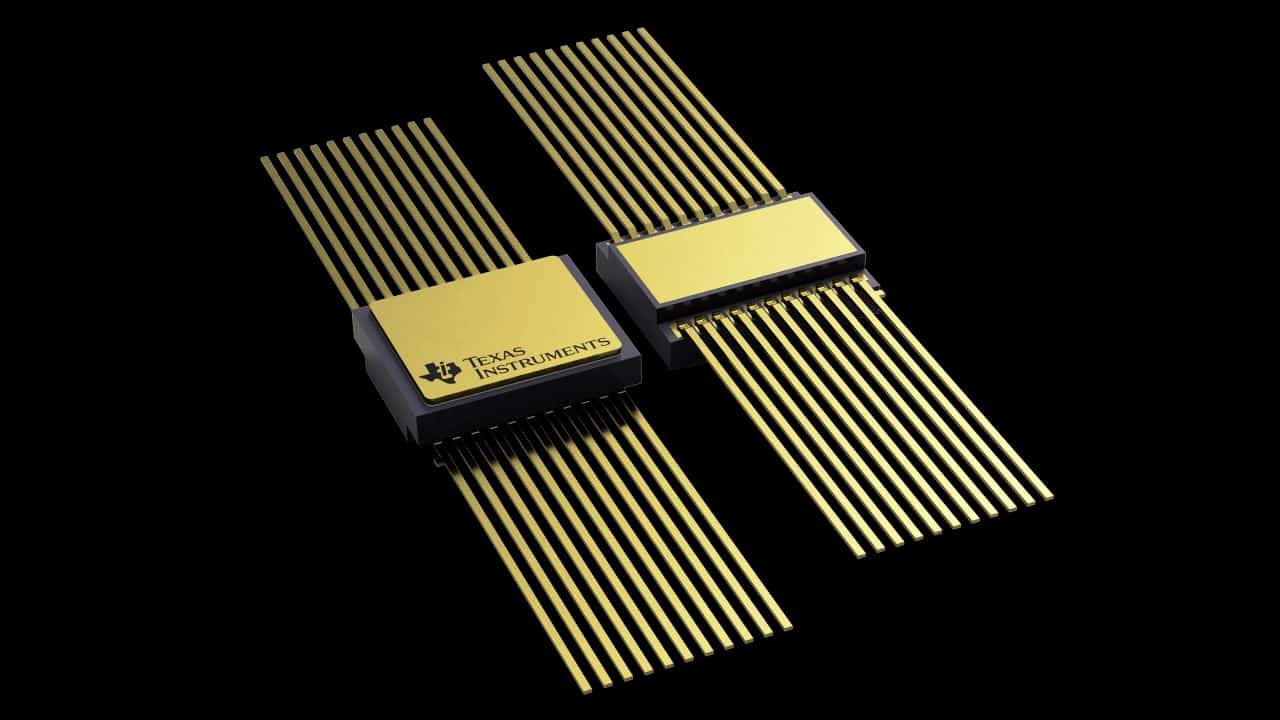
TI TPS7H5001-SP HVA PWM controller
Overcoming the challenges of entering and operating in space is essential for low Earth orbit (LEO) platforms, such as satellites. Doing so requires the development of reliable and durable electronics boards and systems that can maintain operation in the face of these challenges.
An essential functionality in meeting this mandate is power management. The TI TPS7H5001 from Texas Instruments is an advanced controller designed to mitigate the mission critical challenges of LEO space vehicle operations.
Challenges of Mission Critical LEO Applications
For most satellites operating in high Earth orbit (HEO), temperature swings, vibration and pressure effects, and radiation are hazards that must be overcome to achieve their expected life cycle of ten or more years in operation. For these traditional satellites, premature failure can be quite costly. Therefore, time and resource investment into development – including testing – can be extensive. For example, radiation testing for a single component can cost tens of thousands of dollars.
LEO satellites are typically smaller, have a life cycle of about seven years, and are less expensive. And designing electronic systems for these space vehicles presents significant challenges, as listed below.
Design Challenges for LEO Satellites
- Locating components capable of operating reliably in space.
- Mitigating the impact of thermal cycling.
- Avoiding outgassing issues.
- Sustaining operation in the face of penetrating radiation effects.
- Overcoming supply chain issues such as long wait times.
- Meeting the demand for smaller boards and more compact components.
Another challenge is adhering to the thrust toward greater cost effective development by using COTS parts, while simultaneously ensuring consistency in material and manufacturing process quality. A solution to these challenges is using space enhanced plastic radiation hardened components like the TI TPS7H5001-SP controller.
The TI TPS7H5001-SP Power Management Solution
The TI TPS7H5001 is one of a series of PWM controllers built to enhance the reliability of space electronics for LEO applications. The component provides effective power management that is essential for operating in the space environment.
In addition to radiation hardened assuredness, which is a major trend in component development for space applications, the component aids in the optimization of board area minimization for GaN and Si based converters. It is accurate enough to support FPGA core voltages for buck converters that use high currents.
The controller can be driven from an internal oscillator or external clock, as shown in the block diagram below.
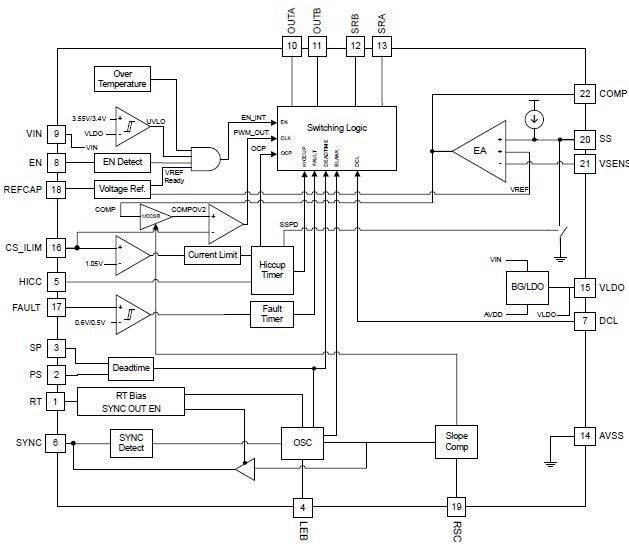
Functionality diagram of the TI TPS7H5001-SP controller
Features and Specifications
The TI TPS7H5001-SP has several key features listed below that make it ideal for LEO satellite applications.
Important Features of the TI TPS7H5001
- 0.6 V ±1% VREF accuracy over load, line, temperature, and TID
- Configurable switching frequency from 100 kHz to 2 MHz
- External synchronization using SYNC pin
- 5-V outputs, 150 mA drive, ROUT = 15 Ω
- Synchronous rectification outputs, dead time (PS and SP) and duty cycle limit configurable (leading edge blanking)
- Configurable soft start, EN (UVLO), FAULT (OCP, OVP, and OTP) slope compensation and current limit, Hiccup OCP mode
- Thermally enhanced 22 pins CDFP, 6.2 × 7.7 mm
The electrical absolute ratings for the controller are shown in the table below.
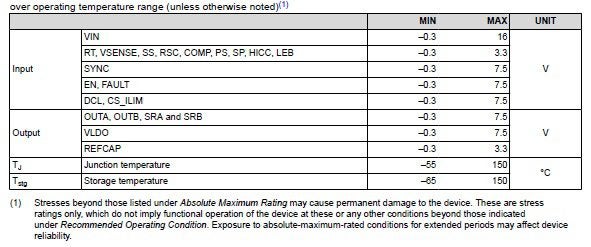
Min-Max ratings for the TI TPS7H5001-SP
Additional electrical specifications are listed below.
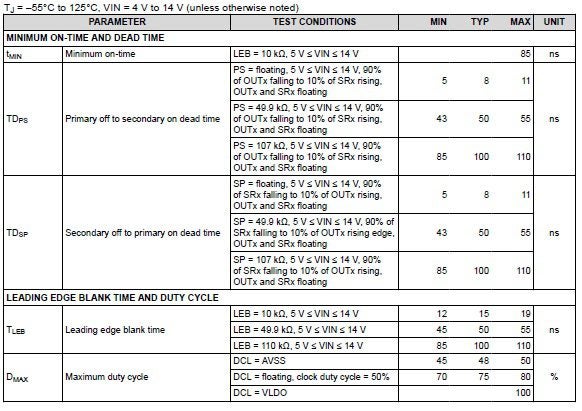
TI TPS7H5001-SP electrical characteristics
Power Management Applications
As explained in the TI TPS7H5001 datasheet, the controller provides a reliable power management solution for DC-DC converters used in space applications. An example circuit design is shown in the figure below.
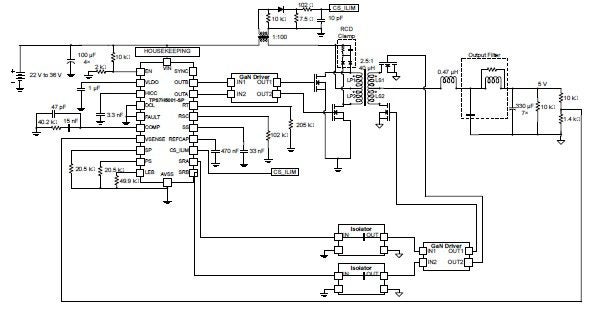
Application example with the TI TPS7H5001-SP controller
The controller is agile and can be used with various converter types; including push-pull, buck, full-bridge, forward, flyback, active-clamp forward and others, to mitigate the hazardous effects of operating in space.
Mitigating Space Hazards With the TPS7H5001-SP Controller
When developing electronic systems for LEO applications, PCBAs and the parts that comprise them must be capable of sustaining normal operations for extended periods. An essential function is that power be available and distributed accurately irrespective of adverse environmental conditions, such as radiation, high temperatures, extreme temperature swings, or even pressure and vibration changes.
The TPS7H5001-SP PWM controller employs a space enhanced plastic that offers resistance to the potential impact of these hazards; including the radiation specifications listed below.
TPS7H5001 Radiation Specifications
- TID = 100 krad(Si) RHA
- SET/SEFI characterized up to 75 MeV-cm2/mg
- SEL/SEB/SEGR immune up to 75 MeV-cm2/mg
If you’re looking for CAD models for common components or design help for advanced parts, such as the TI TPS7H5001-SP for LEO space applications, Ultra Librarian helps by compiling all your sourcing and CAD information in one place. Working with Ultra Librarian sets up your team for success to ensure streamlined and error-free design, production, and sourcing. Register today for free.








